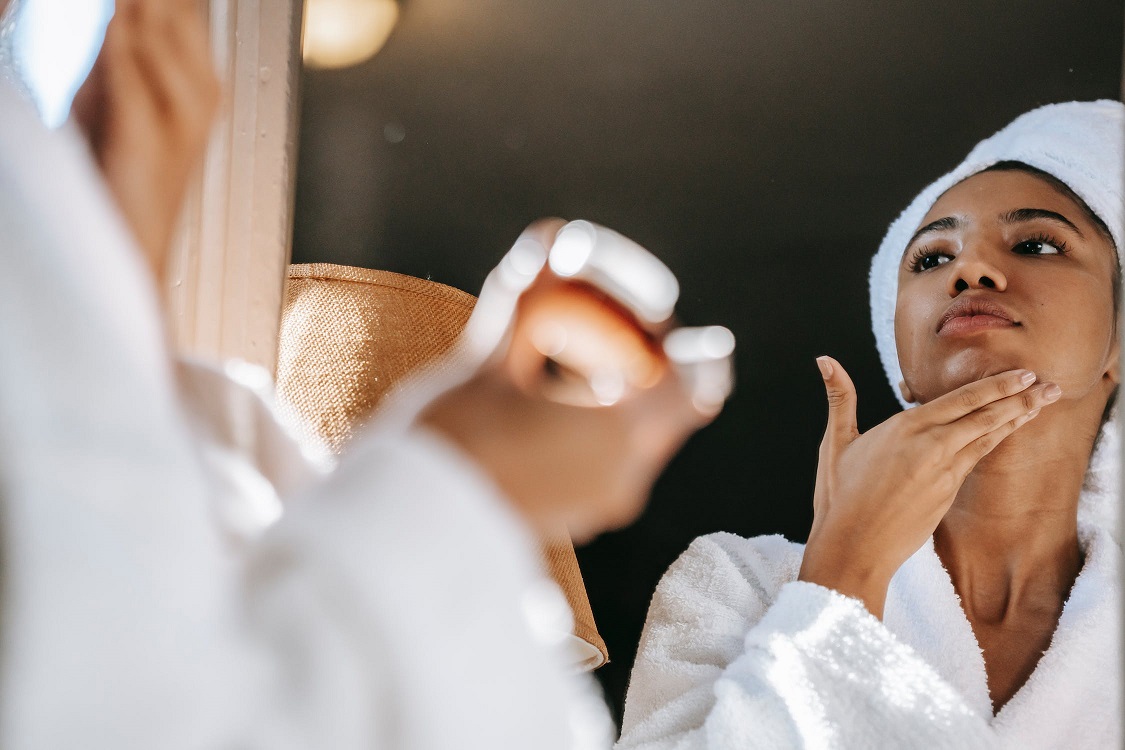Everyone wants healthy, glowing skin, but often our complexions don’t cooperate. Medical-grade chemical peels are a popular way to help eliminate imperfections like hyperpigmentation, fine lines and wrinkles, acne scars, sun-damaged skin cells, and more. Chemical peels come in different types, but which is right for you?
What are Chemical Peels?
Chemical peels are non-invasive cosmetic procedures that remove the outer layers of skin to reveal new skin cells that are brighter and smoother. It involves applying agents, like acids, to remove dead skin cells and dirt, resulting in a more youthful and vibrant complexion. Chemical peels produce a controlled trauma that stimulates the skin’s natural peeling to improve texture in all skin types.
Every medical-grade peel involves a customized treatment plan to address your skin type and problems. After receiving a chemical peel, most people see significant improvement in skin texture and uneven skin tone. Chemical peels address specific issues, including:
- Acne scarring and blemish
- Age spots and dark patches
- Dull or rough skin texture
- Melasma
- Sun-damaged skin cells
Three Different Types of Chemical Peels
Medical-grade treatments are either light, medium, or deep chemical peels. Light peels use diluted acids that slough off dead skin cells from the top layer of the skin to treat mild skin problems. Medium peels have slightly higher concentrations to treat problems like severe acne and hyperpigmentation. The strong acids in deep peels remove several layers of skin to address severe skin problems.
Your skin texture, tone, and any problems also determine the strength of the peel. For example, hyperpigmentation requires a different peeling agent than those used for fine lines and wrinkles. Patients with darker skin tones also require more gentle peels than those with lighter skin tones.
Light Chemical Peels
Light chemical peels use alpha-hydroxy acids or other mild agents to exfoliate the epidermis, the top layer of skin. Also known as superficial chemical peels, you’ll receive a chemical solution applied by your provider with a brush, sponge, cotton ball, or gauze, followed by a neutralizing solution to remove the chemical peel from your skin. Superficial peels are ideal for those who want to improve rough skin and mild skin discoloration. You can also select a light chemical peel to treat your neck, hands, or chest.
Common superficial peel types include:
- Alpha hydroxy acid, a mild form of glycolic acid that gently exfoliates the skin, available in different forms like citric acid, lactic acid, and tartaric acid
- Beta hydroxy acid, a superficial chemical peel, including salicylic acid, that penetrates deeper layers of the epidemic for oil control and minimizing irritation and acne breakouts
- Jessner’s peels, often including mandelic acid to ward off inflammation, phytic acid for sensitivity, or lactic acid for brightening and hydration
- Vitamin C peels neutralize pollution, cigarette smoke, and UVA and UVB rays to defend against free radicals while also providing anti-bacterial and bleaching properties
- Biorevitalization peels, also known as trichloroacetic acid peels, make your skin look younger by treating sun damage, fine lines, and wrinkles
Medium Chemical Peels
Medium-depth peels penetrate the epidermis along with the top portion of the dermis, the middle skin layer, to remove damaged skin cells. Doctors apply medium-depth peels using glycolic acid or trichloroacetic acid. A medium chemical peel treats fine lines and wrinkles, age spots, freckles, moderate skin discoloration, rough skin, actinic keratosis, and other precancerous skin growths. Once your provider finishes a medium chemical peel treatment, you may have a cool compress applied to your skin to soothe it. Over-the-counter painkillers are generally recommended to manage pain.
Generally, you’ll find two types of medium chemical peels:
- Retinol, a form of Vitamin A, penetrates deep into the outer layer of skin to unclog pores, reduce acne breakouts, and rejuvenate, hydrate, and refresh your complexion
- VI peels help correct signs of aging skin, dark spots, acne scars, and more, often with a combination of ingredients, including TCA, phenol, Vitamin C, salicylic acid, and tretinoin
Deep Chemical Peels
More potent agents like phenol and trichloroacetic acid are used in deeper peels to penetrate the skin’s middle layer to remove damaged skin cells. During a deep chemical peel, you will receive sedation via IV fluids before the solution is applied to your skin. This treatment involves applying chemical peeling agents at 15- to 20-minute intervals, turning the skin white or gray. Full facial deep peels take about 90 minutes. Your provider will apply a watertight dressing to the skin and may also prescribe potent painkillers.
A deep peel can only be done once on the face and not on other areas of the body because of the strength of the acids used. They are ideal for treating deeper wrinkles, shallow scars, freckles, and precancerous growths, producing dramatic results because of their penetration into the deeper layers of the dermis.
Deeper peels include the following:
- Glycolic acid, in its strongest chemical peel solution concentration, performs thorough exfoliation to remove sun damage and return a healthy glow to aging skin, resulting in a smoother skin surface with clear pores.
- Phenol, using carbolic acid, sometimes with salicylic acid or resorcinol, reaches the skin’s deepest layers. For safety, only a doctor should apply this chemical peel type.
- TCA, commonly used for medium peels in combination with other agents, becomes a deep chemical peel when its percentage exceeds 20% to target pigment irregularities, deep wrinkles, scars, and precancerous skin growths.
Chemical Peel Healing and Aftercare
Superficial peels are the most commonly performed chemical peel procedures as they are the gentlest types. Discuss the best chemical peel for your problems and skin type with your medical provider. Dramatic facial rejuvenation doesn’t necessarily require a medium-depth peel or a deeper peel.
Be aware that the deeper the peel, the more recovery time you will need, along with a more rigid after-care regimen. Healing time for chemical peels take one to seven days for superficial peels. Medium-depth peels take seven to 14 days for healing, while deep chemical peels take 14 to 21 days, with bandaging often required initially. Always consult your medical provider if you have questions about understanding the different types of chemical peels.




 (5 votes, average: 3.40 out of 5)
(5 votes, average: 3.40 out of 5)









